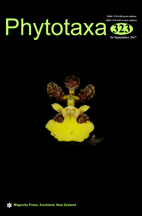Abstract
The genus Seligeria is revised based on morphological and DNA sequence data of nuclear ITS and chloroplastic trnL-F. Fifteen species from most infrageneric units of the genus are recovered in two well supported phylogenetic clusters that are also distinctive in morphology. The clade with the type species of the genus, S. pusilla, includes also S. donniana, S. brevifolia, S. calcarea, S. patula, S. tristichoides, S. trifaria, and S. oelandica. These species are characterized by short, cupulate or turbinate capsules widened towards the mouth, and the lack of a stem central strand. Another clade includes species with rather long, mainly ovate to cylindrical capsules and more or less developed stem central strand: S. campylopoda, S. recurvata, S. subimmersa, S. diversifolia, and S. polaris. These two clusters do not show sister relationships, but the second one appears more closely related to the Blindia clade. To resolve the apparent paraphyly, the latter phylogenetic group is segregated in a genus Blindiadelphus. In some aspects of morphology and ecology it is intermediate between Seligeria s. str. and Blindia, but differs from both genera in subquadrate upper leaf cells and thin- to moderately thick-walled rectangular exothecial cells. Molecular phylogenetic analyses revealed heterogeneity within the specimens previously referred to Blindiadelphus campylopodus, indicating a presence in Asian Russia of an undescribed species that is described here as Blindiadelphus sibiricus. It differs from B. campylopodus by the larger spores and typically rounded leaf apices. The isotype specimen of S. galinae appeared to be nearly identical to S. donniana in the sequences of ITS and trnL-F, and examination of morphology revealed no substantial differences between these species. Thus, we consider S. galinae as a synonym of S. donniana. The genus Blindiadelphus includes species of Seligeria subg. Blindiadelphus and S. subg. Cyrtoseligeria, which however are found intermingled in the molecular phylogenetic analysis. Thus the genus Blindiadelphus is accepted without any infrageneric taxa. The phylogenetic tree is congruent with the subdivision of the genus Seligeria s.str into subg. Seligeria, subg. Anodon, subg. Megalosporia and one newly established subgenus Robustidontia for S. brevifolia.

